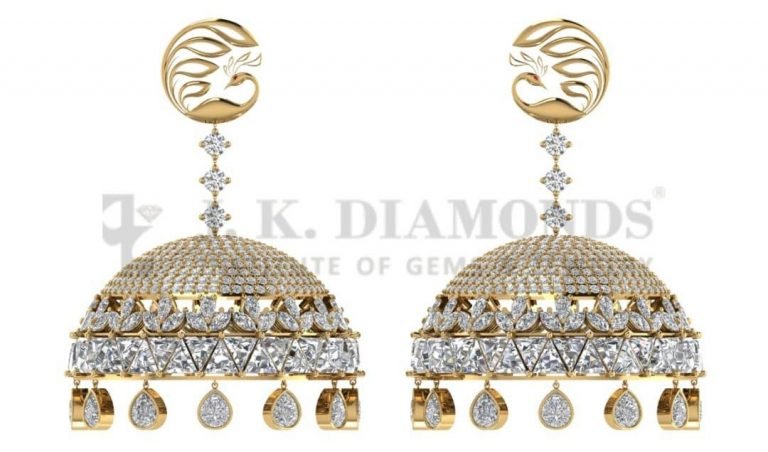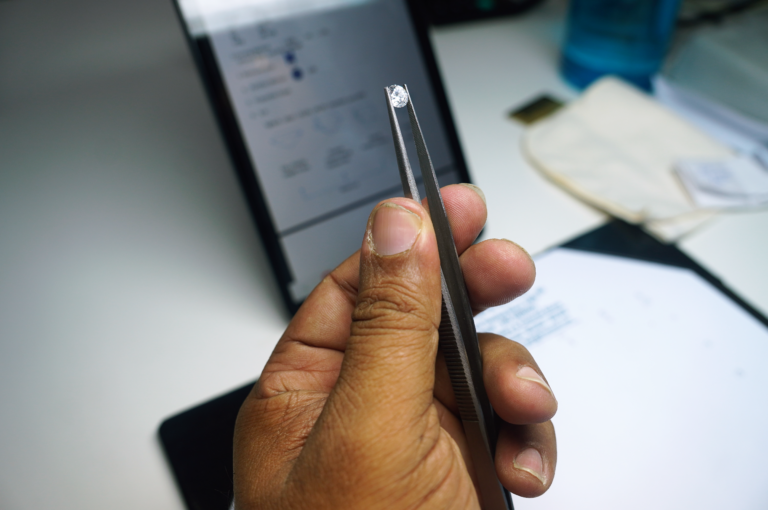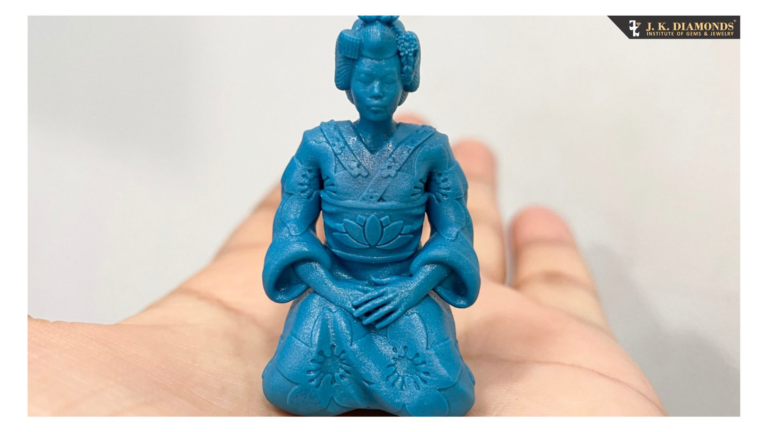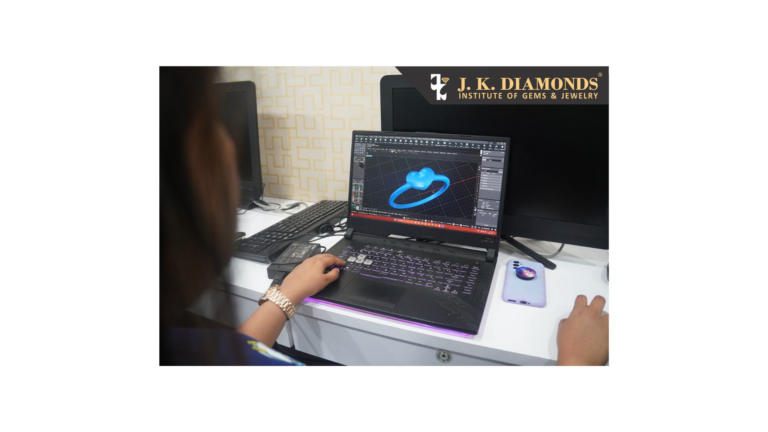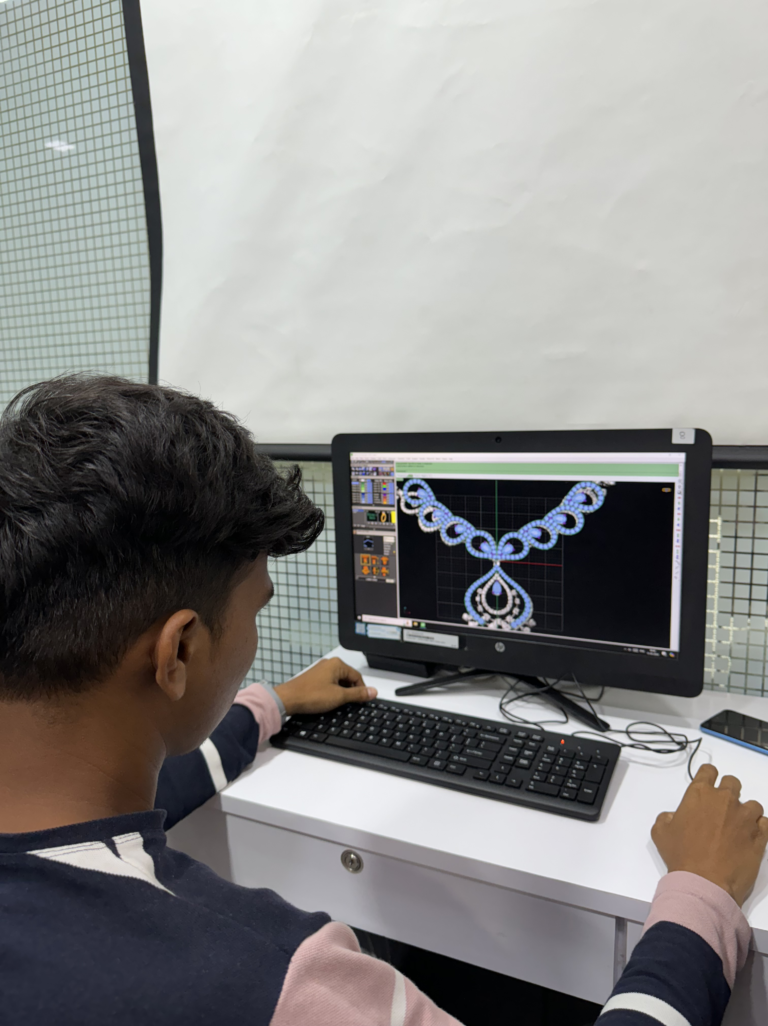A detailed guide to Jewellery Designing in 2024
In the realm of fashion and adornment, jewellery stands as a timeless expression of beauty, elegance, and individuality. As we step into 2024, the world of jewellery designing continues to evolve, blending traditional craftsmanship with modern technology and innovative trends.
This comprehensive guide will navigate you through the intricate world of jewellery design in 2024.
Like any other career path, jewellery designing isn’t a smooth sail. Despite the bling and the shine, this profession too has its own hurdles. Jewellery designers, although a part of a glamorous fraternity, carve their way to success through learnings and experiences.
Of course it’s a rocky road, it’s a road full of sparkling gems– not meant for all but a selected few. With proper understanding of the subject and structured mentoring, you can pave your way into the jewellery designing business successfully.
Jewellery designing in 2024 comes with new lessons, new designs, new opportunities, and a whole new market. Therefore, one cannot rely on a guide of the past to help you shine in the future. This 2024 guide on jewellery designing is structured to give you a fresh new perspective on how to design jewellery and become a successful jewellery designer.

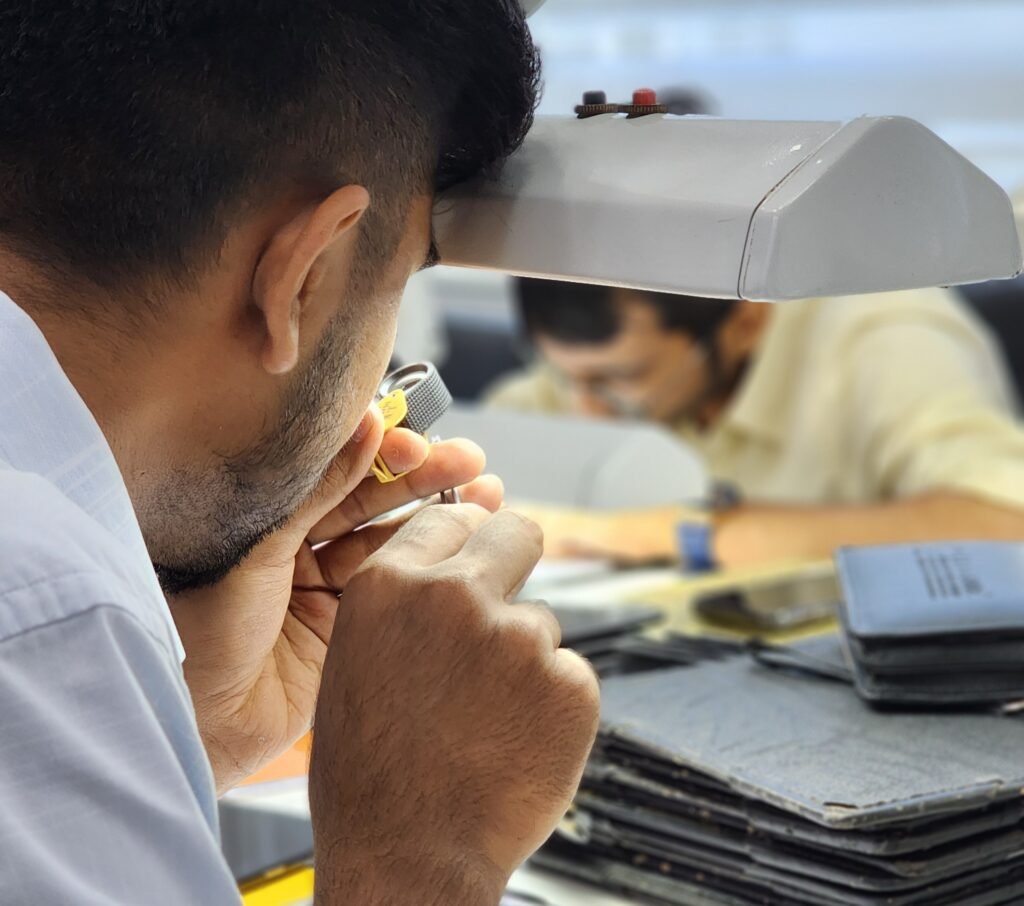
The Pandemic and its effects on business
The effects of the pandemic are best-known to all. Businesses have been sapped since the time WHO declared a global pandemic. On 11th March 2020, the world was awakened and exhorted to follow new ways that were contrary to their customary practices. As most people were trapped inside their homes with little or nothing to do, they started embracing the “new normal” and realised that a lot can be done at home by themselves. This led to a rise in the emergence of small businesses and start-ups.
#supportsmallbusiness – A trend that escalated on social media during this time.
The jewellery industry too adapted newer ways of functioning, rather surviving. However, over time jewellers studied the market and explored new and open doors that brought about stability in the jewellery industry.
Jewellery industry embraced the “New Normal”
India’s predominant form of cultural expression has been jewellery and adornments. The art of adornment goes back to primitive man who used flowers and beads, carved wood, shell, bone and stone. The materials used changed over time. From those that were found amongst nature to ivory, copper and semi-precious stones and gradually to silver, gold and precious stones. Fashion evolved, yet we see traces of tradition in contemporary designs even today.
Jewellery designers all over the world also faced challenges during the pandemic phase. However, they too bagged on the idea of adaptability and conveyed the sentiments of tradition and style combined with situational awareness through designs, to bring about a revolution in the jewellery designing business. This form of art demands creativity and a burning desire to learn, re-learn, and explore to evolve.
Here’s a checklist:
- Are you creatively driven?
- Do you have a knack for designing?
- Are you absolutely smitten with jewellery?
- Do you believe that your passion could turn into a career?
If the answer to these questions is a YES, what are you waiting for?
Let your passion become your way of life.
Having a passion to drive you in your busy schedule is one thing, but being able to take the activity you love and turn it into your full-time job or business successfully is entirely possible.
The internet is full of people exclaiming, “Do what you love, love what you do!”
Here’s your chance to turn your interests and talents into work. You’re not expected to be adept with the entire jewellery designing aspect of the industry. But do not worry, here’s a guide that will help you craft your own jewellery design profession for a living.
First things first, let’s understand the scope of Jewellery designing and what the career has to offer.
What drives a buyer to buy a particular piece of jewellery at the store?
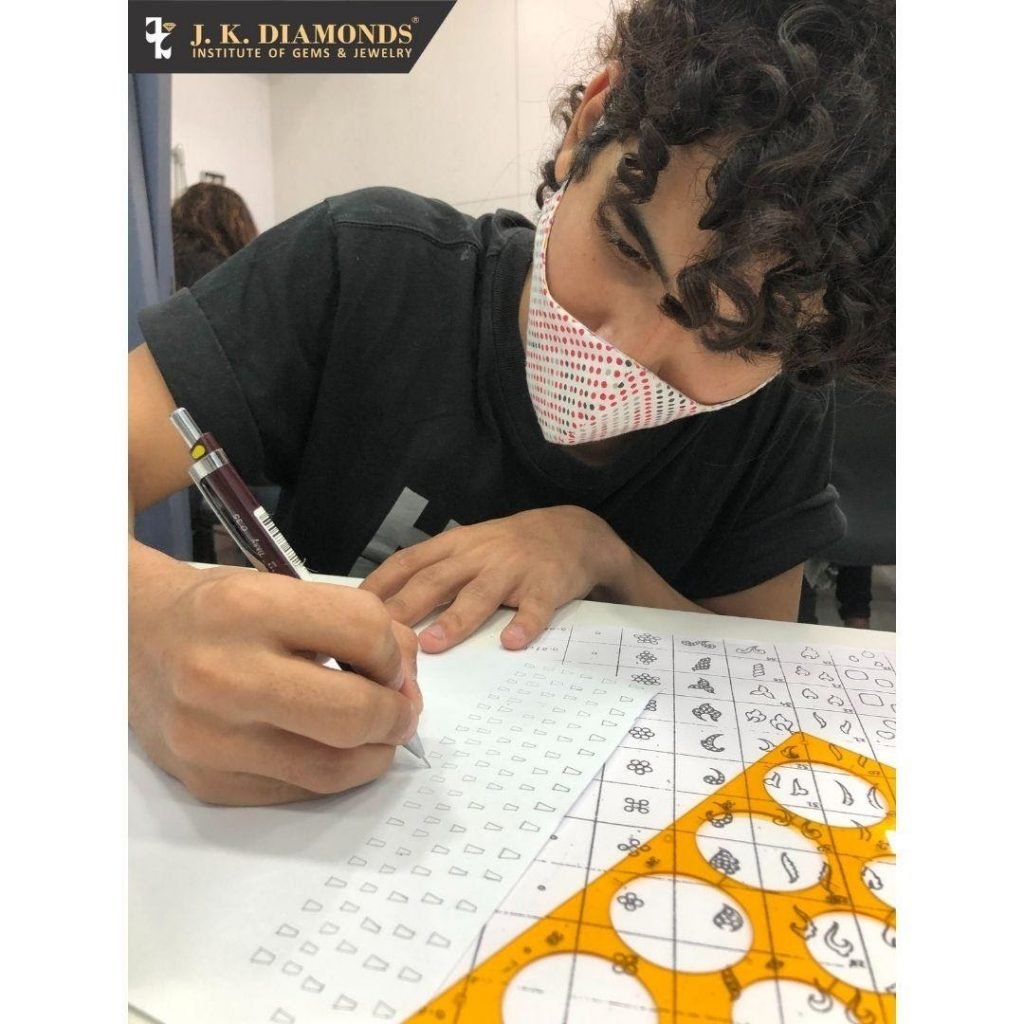

The design and the mindset.
The design of the jewellery draws attention to it. Appearance is the ultimate deciding factor in almost all purchasing decisions. Jewellery designers design jewellery keeping in mind their customers’ preferences. The designs need not be solely artistic or creative, it needs to appeal to the emotions of the buyer. The art of jewellery design is also a science that studies metals, gemstones, technicalities in manufacturing, trends, tradition, style, along with art and aesthetics.
The market is competitive, while growing and expanding at the same time! There’s always room for newbies who can fit into an untapped niche market or bring about a fresh perspective to traditional art and designs. Whatever your motivation is, starting a jewellery designing business comes with its own set of challenges and considerations.
Here are some pros of working as a jewellery designer:
- Serves as a great outlet for your creativity
- Allows you to experiment with your imagination, learn, and flourish as entrepreneurs and employees in this industry
- Get an opportunity to work with different jewellery brands
- Be a part of this lucrative and glam business where profit margins are high
- Demand for jewellery will never die
- A great industry, where your customers are probably celebrating an occasion, like a birthday, wedding or anniversary. They are most likely financially stable and hence a good business to be in.
And with opportunities come challenges…
The greatest challenge faced by people in this business is competition. Like we mentioned earlier, the market is pretty competitive. And therefore, if you’re planning to be a part of this industry, you need to up your game. In order to stand apart and excel in this field, skill, talent, and creativity must be top notch.
“I have enough jewelry”– said No woman ever!
One thing you can be assured of is that you’ll never run out of business in a world where jewellery has been adopted as an expression of emotion. What’s more convincing than this?
Let’s quickly understand how to design jewellery.
Now, jewellery designing is an art and to present that art, one needs to create a portfolio of designs. To compile these, one needs to understand the technicalities and basics of jewellery designing. There are a number of courses out there that help you with designing and the creative principles associated with jewellery designing in specific. You can check out basic plus advanced curriculums here.
If you aspire to be a jewellery designer, one of the first things you need to take care of them is the fact that you need to get educated. Without proper training, you are bound to make multiple mistakes, take longer to settle in the career, and even let go of opportunities that would otherwise be at your doorstep.
- You could formally get trained at an Institute that offers jewellery designing as a course that serves to train students in this field. Now-a-days online training courses are flourishing and one can stay in the comfort of their home and learn the skills required to be a qualified jewellery designer. You can check out Learnathon to understand this.
- The choice is up to you- you may choose training online/offline. But remember that the importance of being educated plays a very important role if you want to become a successful jewellery designer.

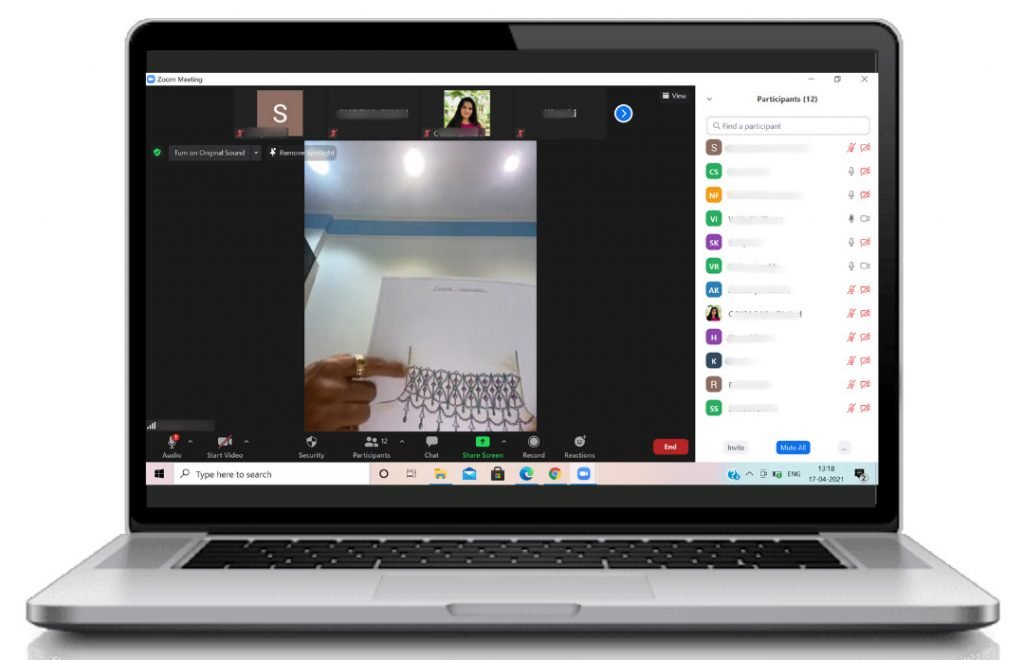
If you go by the first option of enrolling yourself for a jewellery designing course at an Institution like J K Diamonds Institute, , then upon research you will come across the fact that the course duration typically varies from 6 months to 1 year, depending on the course and the institution of your choice.
The sweetest perks of opting for formal education from a reputed institution are:
- These institutions have a good chain of networks which form a part of the industry. When you walk in to seek knowledge, you also get the benefit of building connections with brands and people from the jewellery industry. Needless to mention, networking is an important part of the journey to be a successful jewellery designer.
- J K Diamonds Institute of Gems & Jewelry focusses on 100% practical training for all its jewelry designing courses, either for Manual designing or CAD jewellery course. Practical training for jewellery designing is of paramount importance as it provides knowledge of ground reality of the jewellery industry and makes you industrially equipped with market knowledge.
- In this setting, students get better exposure in terms of learning and practice. Courses are designed to meet the real world requirements. The market today demands more than it used to in the past. Times have changed and the skills demanded of a newcomer jewellery designer are obdurate.
- Jewellery design is misunderstood to be an art that requires you to be a sketcher only. Well, while sketching is an important skill that a jewellery designer must hone, it isn’t all. Good communication skills, visual imagination, an eye for detail, adequate knowledge of past and present market trends, creativity, the knowledge of different metals and gemstones, and the technical process of jewellery manufacturing are important lessons that a jewellery designer must strive to learn.
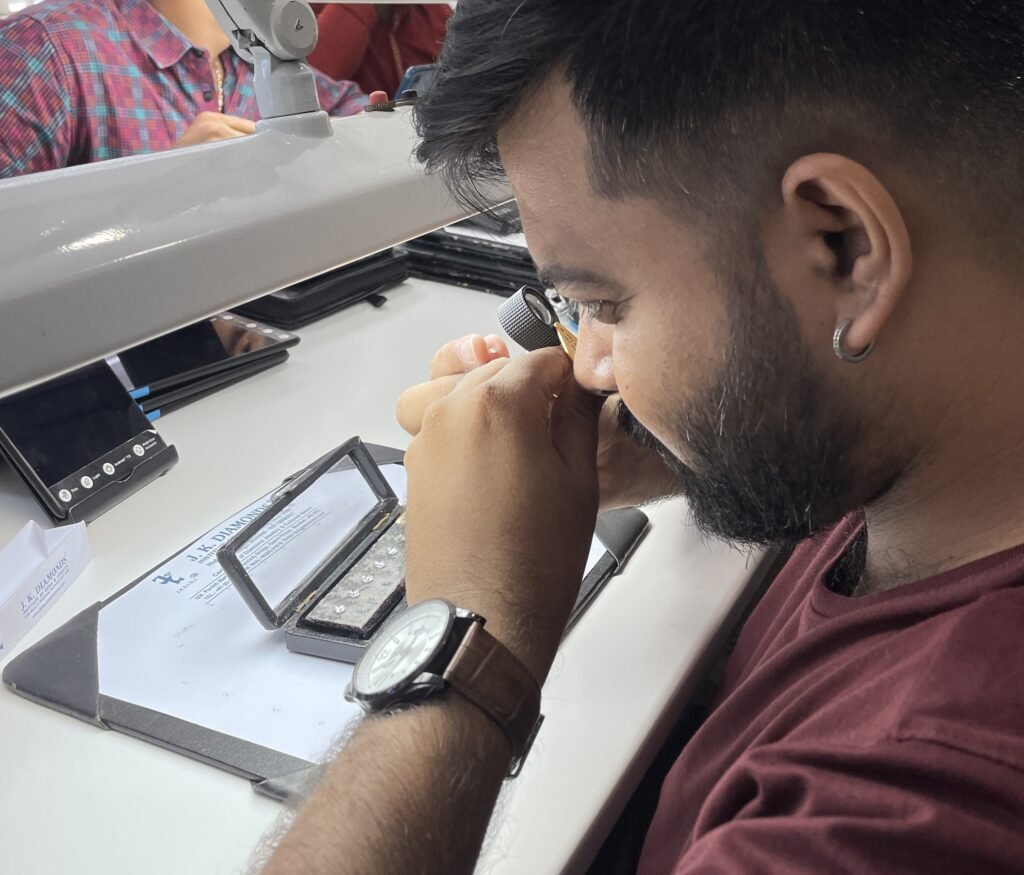
We understand that the number of options available in terms of institutions can get overwhelming. But don’t worry, we’ve got you covered. Here is a checklist of things you must expect from a jewellery designing course:
- The basics of jewellery design– Understanding of common jewellery design practices, traditions, history and evolutions, emerging trends, consumer psychology, value and nature of metals and gemstone are important topics that need to be covered in a jewellery design class. Apart from this, technology has dominated the industry and designers must be adept with softwares that allows them to present their designs digitally. CAD – Computer-Aided Design is a technology that has revolutionized the jewellery industry and thus a jewellery designing course must train students to use and master this technology. CAD also helps jewellery retailers to drive e-commerce business for their jewelry brands due to added knowledge of jewellery rendering.
- Understanding jewellery designing concepts, materials and manufacturing processes– The course must comprise modules that train in understanding shapes, forms and temperatures- factors that are useful when designing in the real practical environment. Students must gain a brief understanding of how gold, silver and other precious metals are used in the manufacturing process. Knowledge of stones, gems and metals, engraving, polishing, enamelling, testing of quality and such other techniques are taught to ensure that students enter the industry with the knowledge of every detail involved in the jewellery design process.
- Jewelry design markets – India and International- The course curriculum should also be covering designs across regional barriers. India, in itself, has a range of markets, from traditional bridal jewellery to South Indian based temple jewellery. From light weight minimalistic jewellery to tech based smart jewellery, several trends are evolving across the country. Similarly, knowledge of international markets is essential. At J K Diamonds Institute, the curriculum covers both India as well as International markets including US, Europeean, Japanese, UAE, Hong Kong among others.
- Techniques & principles of jewellery design- There are a number of techniques which are used in jewellery making. It is important to learn/be familiar with these techniques. In this manner, jewellery designers can broaden their creative horizons vastly. Principles of design such as balance, contrast, harmony etc. are crucial components of a jewellery designing course. Understanding the techniques and principles of jewellery helps in knowing the manufacturing possibilities of a particular design.
- Getting your jewellery made- The primary focus here is on production. Whether you’re working on the creative or logistics side of the jewellery industry, the knowledge to deal with jewellery manufacturers, import & export houses etc. is a crucial skill to have in the market. Formative information about production strategies, storage, scales of production and more are to be taught in this course.
- Portfolio & Marketing- Marketing is an essential part of business. Jewellery designing courses should help you create a diversified portfolio which stands as a testimony to your skills. You will not only learn the design and aesthetic aspect of the jewellery portfolio but also the presentation and communication skills required to pitch your designs. Ensure that you join a course that offers training by expert trainers who are associated with or part of the industry.
Presentation of ideas
Simply having a brilliant idea will not get you clients. There has to be a way to externalise your ideas. A strong artistic vision must be accompanied by a medium to express and showcase your designs effectively..
Here’s a look inside the day to day routine of a professional jewellery designer:
- Brainstorming ideas
- Taking inspiration from various sources
- Designing your jewellery manually
- Modelling the idea via a computer-aided software and rendering the final design
With this the process does not come to an end. The above-mentioned practices are only a part of the pre-production process and much more needs to be done before the jewellery can finally make it to stores and distribution chains
After all the above steps are complete, the post-production phase is started.
If you’re creating your own one-stop jewelry studio, you will also be required to:
- Choose an assortment of stones and gems which will match the design
- Purchasing the diamonds and colored stones from dealers
- Creating a 3D-printed prototype of the design
- Sending the prototype to the design head/customer for approval and simultaneous changes if needed.
- After the approval, the design is sent to the goldsmith who does the metal-casting and stone-setting, as well as more niche technical tasks like engraving and enamelling.
Although jewellery designers don’t need to have an in-depth understanding of the post-production stages, having a basic knowledge will help them create designs which can be produced and worn by consumers.
Take off from being a student to becoming a professional jewellery designer
Now that you have the right knowledge after getting educated in the jewellery designing field, what shall you do after the course is completed?
On completion of the course, landing a job becomes important. The two most important parts of marketing your jewellery designs and gaining rewarding opportunities are
- Creating a stunning portfolio that stands apart from the competition
- Skills acquired during your course.
A portfolio stands as a testimony to your skills and the talents you claim to have. Your recruiter will not understand what you can offer without actually showing him/her a tangible proof of your work. In this way, your skills can be showcased and you will convey that your participation can add value to their brand.
Compile your portfolio with designs that stand out. At J K Diamonds Institute, all students create their own unique portfolio by the end of the course covering various designs including Art deco, Victorial, Indian markets and international markets. Hence, you needn’t worry about your portfolio.
Institutions usually have a strong network base that is created as a result of being an active part of the industry. Several companies including MNCs inquire at J K Diamonds Institute with vacancies for jewellery designers. This network can help jewellery designers bag interviews easily. . Apart from this, you must leverage Linkedin, a networking platform for professionals. You must find out who can help you get the attention of people from the industry, look for people from the same profession as yours and get in touch with the recruiters of brands that you love and those that make an impact on your profile. Sometimes these opportunities won’t be public and candidates must personally reach out to the, in order to enquire for a position. Having a way with writing emails and substantial marketing skills will help you get a job in your dream brand and networking with people who matter will give you the boost you require. Students always need to remember that the Luxury and fashion industry is one which runs on word of mouth marketing and thus knowing the right people can mean a job at your dream brand in no time.
Career Paths in Jewellery designing:
Once you have realised your goals to become a jewellery designer and have completed your degree in design, you can then choose your career path in an abundance of options in front of you. You can use your newly gained knowledge in the following places:
- Freelance jewellery designer
- Customised jewellery
- Boutiques
- Start your own jewellery brand
- Work for jewellery brands/ retail chains
- Television and Film Industry
- Accessory Designing Houses
Pick your niche category
While starting off with a jewellery designing career you must consider asking yourself this question- Fashion or fine jewellery? Or if something else interests you in between. It is important to find your niche at the very beginning of your journey. Pick your niche and study it thoroughly because each of these categories has its own materials, production process, price points, and customer profile.
Fine Jewellery– This type of jewelry is made with precious and semi-precious metals and gems. It’s usually more expensive than the others.. Fine Jewellery is made with excellent craftsmanship. This type of jewelry is purchased by customers for luxury and special occasions like weddings, anniversaries, engagement functions etc. New trends include light weight daily/frequent wear fine jewellery segment has been growing exponentially.
Fashion or costume jewelry– Trending jewellery that is made of inexpensive or less expensive metals and materials (beads, wire, plated metal, plastic, synthetic gems, etc.) This type of jewelry has a lower price point and appeal to the masses to be used regularly by customers.
Others- This category includes everything else – from jewellery made with mid-range materials (textile, metals, semi-precious gems, wood, 3D printing, etc.) to jewellery defined as art (collectible, made to order, one of a kind) or highly skilled craftsmanship. The emphasis is on the design and uniqueness of the jewellery. The price point varies depending upon the jewellery. Such jewellery makes for an amazing gift idea, statement fashion jewellery , for design-savvy people and for collectors, who purchase such jewellery for its beauty and rarity.
Once you’ve found out what category suits you best, pick a niche among your audience. Target a small group of people who are most likely to interact with your products and services. You cannot have the whole world as a target audience. Research and find out which group of people are your prospects and study each of their behaviour to target them effectively.
Keep up with the trends:
To understand the market and the trends that have been set is crucial. Researching trends is a definite way to go forward with your business. Here are some ways you can be up-to-date with trends for each upcoming season:
- Read up- fashion & jewelry blogs and publications
- Follow influencers in the fashion and jewelry space
- Google trends will help you find the global search volume
- Look for adjacent trends (For example, sustainability) and study consumer habits
- Keep a tab on Pinterest and Instagram. These are most prominent in the jewelry space.
- Alternatively, you can also launch a style and trend of your own which has never been seen before
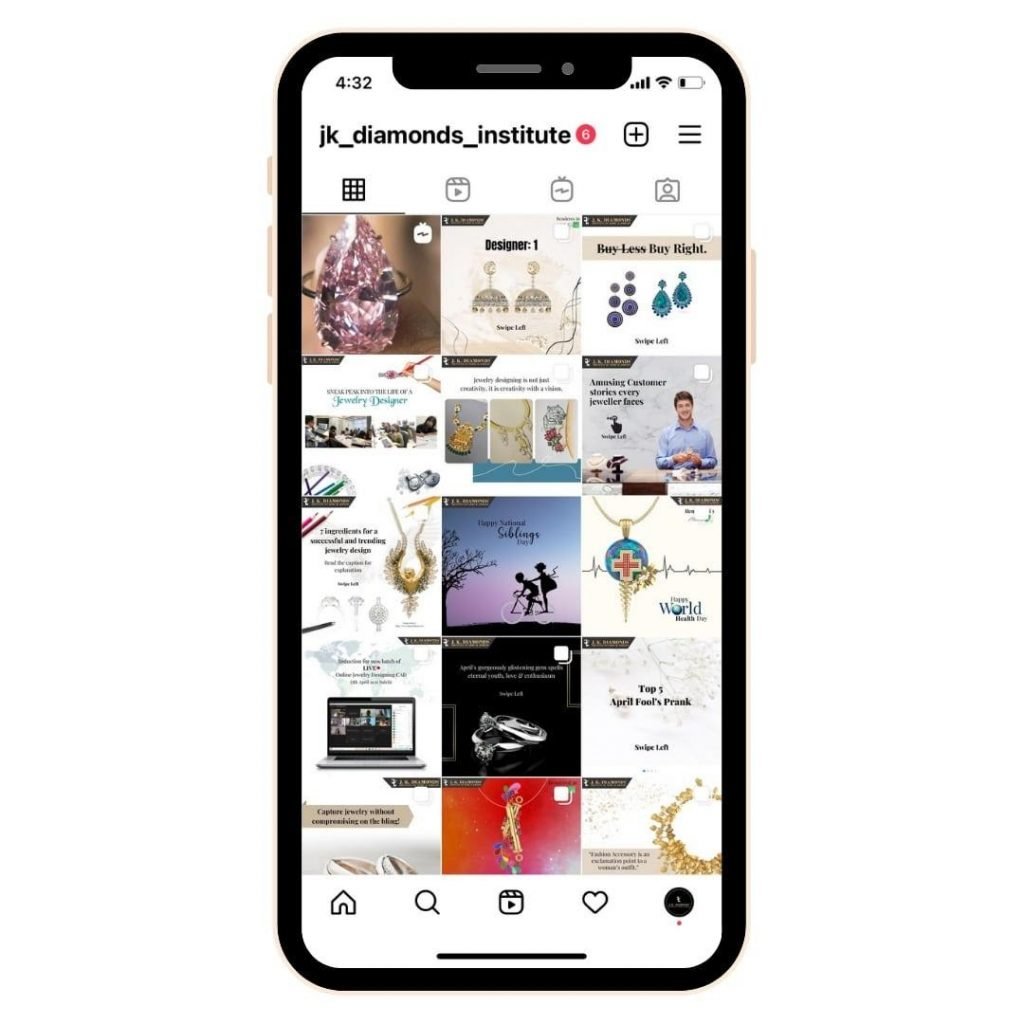
Find jewellery inspiration:
You can find inspiration from any source you like. Inspiration is all around you. All that’s needed is a keen eye for creativity. Jewellery designing gets much easier and fun when you are captured and surrounded by creative people, a fresh and unique environment and access to digital platforms that can inspire. Pinterest is a great source of inspiration for creative people. You can also design your own digital mood boards,, or gather inspiration physically- assembling it inside a journal or pin it up on a bulletin board. Here at JK Diamonds Institute, the Learnathon platform is leveraged to help students and alumni to connect with other like minded people and collectively grow.
Collect inspiration wherever you go and keep inspiring others too.


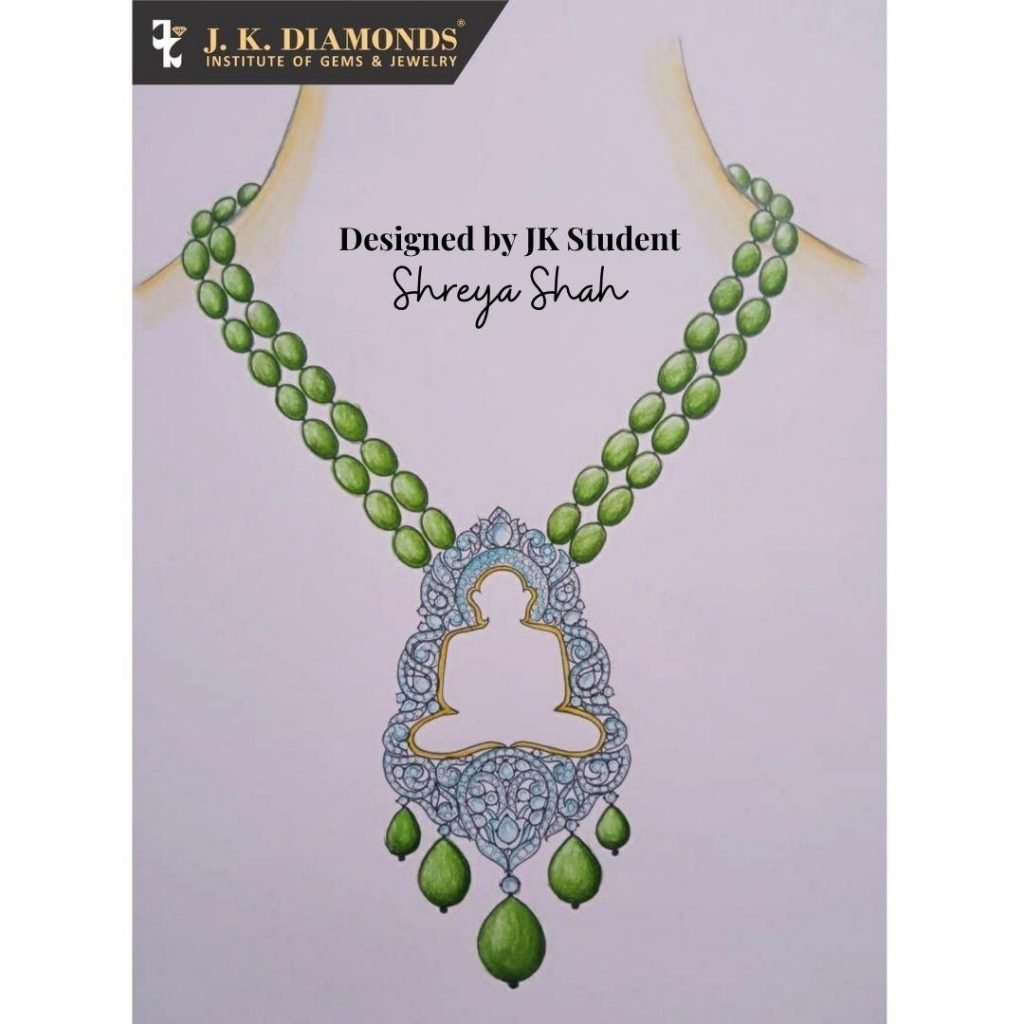
Build your own brand
Brand refers to the vision, mission, purpose and story of your brand. Have a business plan in place and communicate your brand ideas effectively through various channels. You can have a website that has an about page and narrate the story of your brand there. Be present and active on social media platforms. Share the process and inspiration behind your jewellery designs.
For your jewellery brand you must customise the logo and packaging to convey the same story. These elements make brand identity stronger. Even as a small business or a start up, you cannot afford to miss out on these essentials of creating a brand.
Set up your jewellery studio
Before setting up your jewellery studio, ensure that your production and manufacturing plans are in place. There are multiple ways to produce jewellery- it could be handcrafted/handmade jewellery, factory outsourced, or made on demand. You can also use the Learnathon app to connect with manufacturers and dealers. Once you’ve got the production bit sorted, you can move ahead and set up your own jewellery studio.
For an Ultimate guide on how to launch a jewellery studio click – https://bit.ly/3vjxfBA

